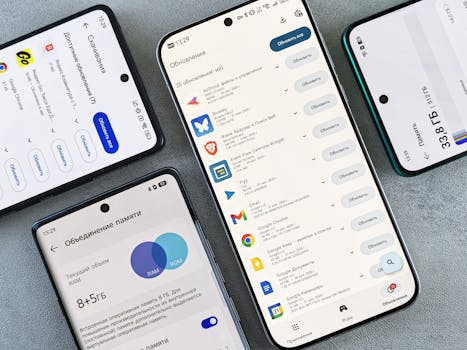
**
The European Broadcasting Union (EBU) has released an updated version of its influential Connected Car Playbook, a significant development for the automotive and broadcasting industries. This revised guide provides crucial insights into the evolving landscape of in-car entertainment, infotainment, and the broader connected car ecosystem. The update reflects the rapid advancements in technology, changing consumer expectations, and the growing importance of seamless integration between vehicles and digital content platforms. This article delves into the key changes and implications of the updated playbook, exploring topics like connected car technology, in-car entertainment, automotive infotainment systems, and the future of broadcasting in vehicles.
Key Enhancements in the Updated EBU Connected Car Playbook
The EBU's Connected Car Playbook has long been a valuable resource for broadcasters, automakers, and technology providers navigating the complexities of the connected car market. This updated edition builds upon its predecessor, addressing several critical areas:
Enhanced Focus on User Experience (UX) and User Interface (UI) Design
The updated playbook places a strong emphasis on user experience. Modern drivers demand intuitive and seamless interactions with in-car systems. The EBU highlights best practices for UI/UX design, ensuring that infotainment systems are user-friendly, safe, and enjoyable. This includes:
- Voice control optimization: The playbook emphasizes the importance of robust and accurate voice recognition systems for hands-free operation, crucial for safety while driving.
- Personalized content delivery: Tailoring content to individual driver preferences through personalized dashboards and recommendation engines is highlighted as a key aspect of a superior user experience.
- Intuitive navigation and interface: Clear, concise information architecture is essential for easy access to features and content, minimizing driver distraction.
Addressing the Rise of 5G and Advanced Connectivity
With the widespread rollout of 5G networks, the playbook explores the opportunities and challenges presented by this advanced connectivity. 5G's high speed and low latency open doors for richer content experiences, including high-definition video streaming and real-time data applications. However, the playbook also acknowledges the need for robust security measures to protect against vulnerabilities in 5G-enabled vehicles. Key considerations covered include:
- Cybersecurity protocols: Implementing robust security measures to protect against cyberattacks and data breaches.
- Data privacy considerations: Adhering to data privacy regulations and ensuring responsible data handling.
- Network reliability and resilience: Strategies to ensure a seamless and uninterrupted connectivity experience.
Integrating Broadcasting with Streaming Services
The playbook addresses the increasing convergence of traditional broadcasting and streaming services within the connected car environment. The EBU emphasizes the importance of a unified and integrated approach, allowing drivers to seamlessly switch between live radio, on-demand audio, and video streaming services. This includes:
- Hybrid radio integration: Combining traditional FM/DAB broadcasting with online streaming platforms.
- Seamless content discovery and access: Providing easy navigation and access to a diverse range of audio and video content.
- Personalized content recommendations: Leveraging data and algorithms to offer relevant content suggestions.
The Importance of Open Standards and Interoperability
The updated playbook underscores the need for open standards and interoperability within the connected car ecosystem. This ensures that different manufacturers, broadcasters, and technology providers can easily integrate their systems and services, fostering innovation and competition. Key points include:
- Promoting standardization efforts: Supporting the development and adoption of industry-wide standards.
- Encouraging open APIs: Facilitating the integration of third-party applications and services.
- Supporting interoperability between different platforms: Ensuring that systems and services from different vendors can work together seamlessly.
Implications for the Automotive and Broadcasting Industries
The updated EBU Connected Car Playbook has significant implications for both the automotive and broadcasting industries. For automakers, it provides a roadmap for developing superior in-car entertainment and infotainment systems that meet the demands of today's connected consumers. For broadcasters, it offers guidance on adapting to the changing media landscape and expanding their reach into the connected car environment.
The focus on user experience, 5G technology, and interoperability highlights the need for collaboration and innovation across industries. Automakers must work closely with broadcasters, technology providers, and content creators to deliver a truly integrated and engaging in-car experience. This collaboration will be crucial in shaping the future of automotive infotainment and driving the adoption of connected car technology.
The Future of In-Car Entertainment
The EBU's updated playbook isn't just a guide; it's a blueprint for the future of in-car entertainment. It points towards a future where vehicles are not just modes of transportation but seamlessly integrated digital hubs, offering personalized content, advanced connectivity, and a truly exceptional driving experience. By embracing the recommendations outlined in this playbook, the industry can unlock the full potential of the connected car and pave the way for a more enjoyable and efficient automotive future. The evolving connected car landscape requires continuous adaptation and innovation, and this updated playbook serves as a critical resource in navigating this dynamic market. The future of driving is connected, and the EBU's playbook helps illuminate the path forward.




















